SALT LAKE CITY (Day 7 - part 2)
The fourth and top floor:
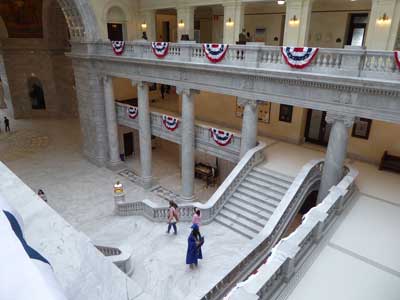

Aha, it's a graduation!
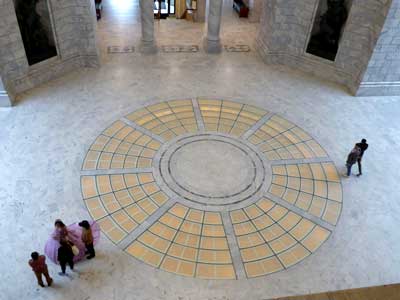

(left) The glass lets light filter down to the lower floor. ... Murals depicting some of the region's history


"Advent of irrigation by pioneers" ... "Peace with the Indians – September 1852"


"Fremont first sees the Great Salt Lake 1843" for explorer John C. Fremont ... "Peter Skene Ogden at Ogden River 1828" doing some fur trapping


Together, the chandelier and chain hanging from the center of the dome weigh around 4,000 pounds.


(right) David Abbott Jenkins (1883 - 1956)
David was the 24th mayor of Salt Lake City between 1940 and 1944. He was also a professional race car driver and he set many land speed records at the Bonneville Salt Flats.


"Passing of the Wagons" (painted in 1917) depicts the arrival of the pioneers in the Great Salt Lake Valley in 1847.
The weather was holding so we headed outside again to see more things.
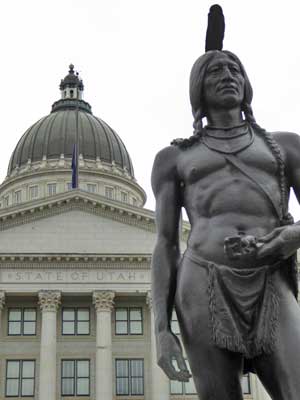
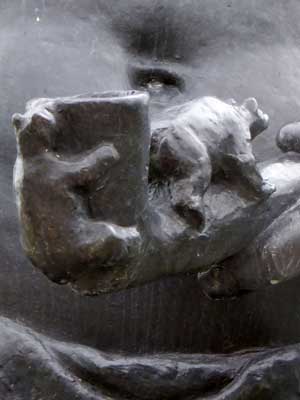
Massasoit (c. 1590 - 1661) ... and his cute bear pipe
Massasoit was the grand sachem (intertribal chief) of the Wampanoag. Massasoit simply meant Great Leader, hence it was his title and not his name. But since the English colonists didn't understand this at the time, it stuck. He had peaceful relations with the settlers of the Mayflower, which arrived in 1620 at Plymouth, Massachusetts. The alliance was mutually beneficial. His people had been weakened by outbreaks of disease and were vulnerable to attacks by neighboring groups, and he helped the new colony avoided starvation during the early years. He was able to keep the peace for many decades, but new waves of Europeans created tension as they steadily took over more and more land. After he died, his son led a war.
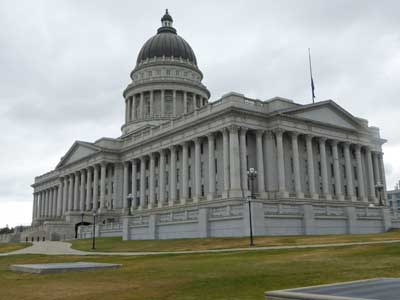


The Mormon Battalion Monument commemorates the approximately 500 Mormon pioneer volunteers who joined the U.S. Army to help fight in the Mexican-American War of 1846-48. The 29-foot high rose pink granite and bronze carving was completed in 1927 after 22 years of work. The four side panels contain 33 figures and tell the story of the battalion: the Enlistment, the March, the Discovery of Gold in California, and the Arrival of the Pueblo Detachment.
From 1846 to 1847, the battalion made a 2,000-mile march (the longest infantry march in U.S. history) from Iowa to San Diego, California. This was to show the U.S. government that they were truly loyal to the country (in spite of previous grievances of discrimination and persecution) and generated an income for their new home and future in the Great Basin.
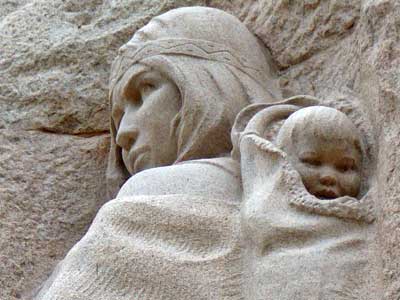

The three larger figures are (left) Vanishing Race and (right) Battalion Man and Columbia. The model for Columbia was Annie Beatrice Jones Lloyd, a descendant of two Mormon Battalion members.
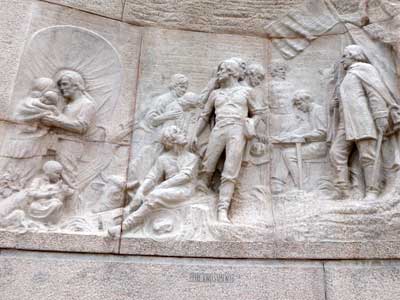

The Enlistment


The March




The Discovery of Gold in California


Arrival of the Pueblo Detachment, Salt Lake Valley July 29, 1847
We then walked down the hill into downtown.
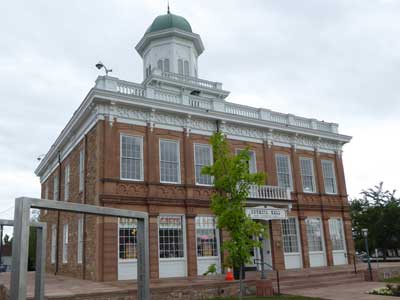
The old city hall (1863) served for nearly 30 years as the seat of the territorial government. The bell in its cupola sounded fire alarms and curfews. In 1961, the building was moved here from its original location.
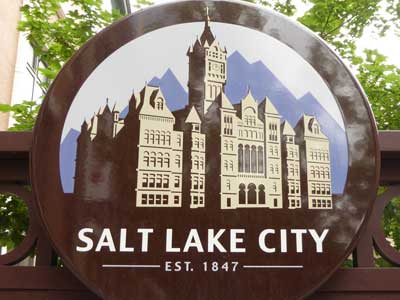

The current city hall ... a beehive in the sidewalk


(left) Eagle Gate (built in 1859) marked the entrance to Brigham Young's homestead.





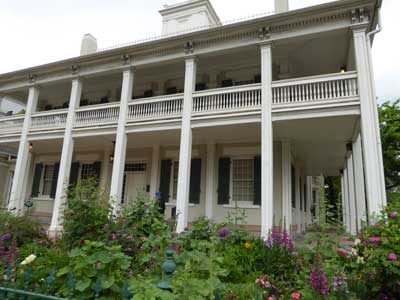
The Beehive House (built in 1853-55) served as Brigham Young's home and office.

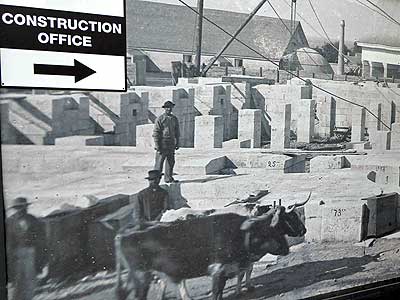
The enormous Salt Lake Temple was unfortunately under wraps.
return • continue

